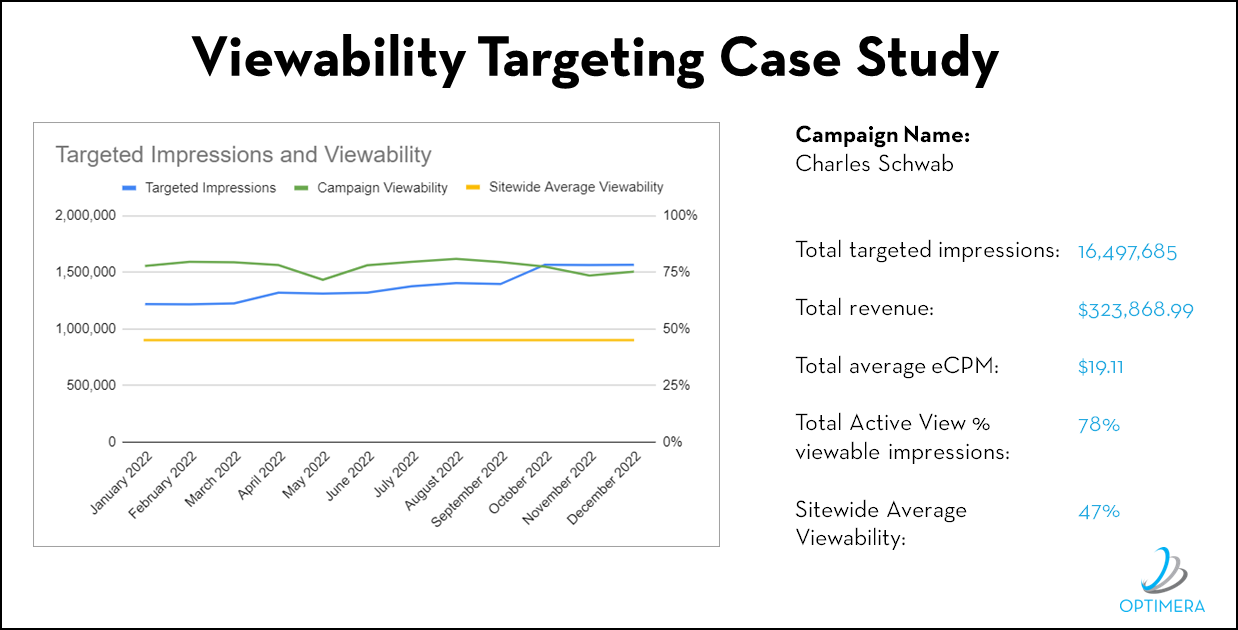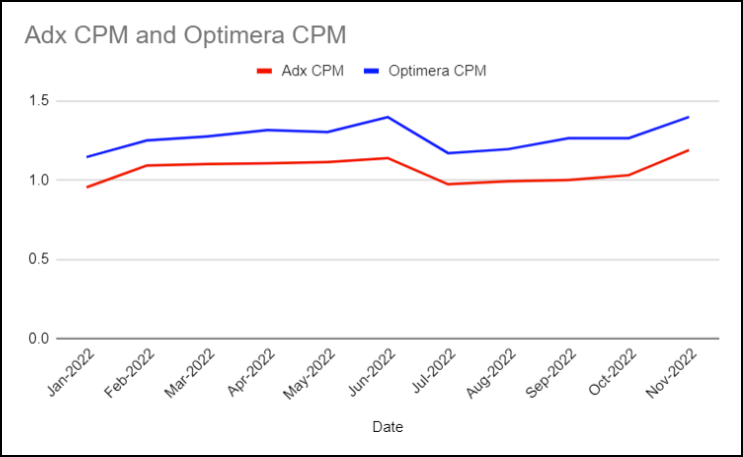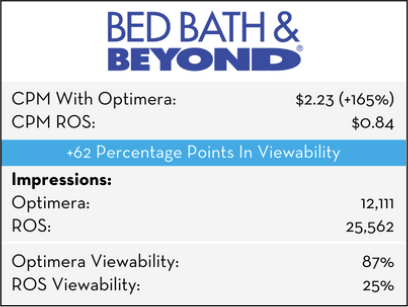Campaign Optimizations Drive Publisher Revenue and Advertiser Success
When buying online ad space, advertisers strive to achieve the best possible business outcomes. They measure the success of their advertising campaigns by impressions, clicks, and conversions and seek to maximize their return on investment.
On the sell side of the transaction, publishers have a vested interest in helping advertisers succeed, and they have plenty of levers to pull to impact performance. By implementing campaign optimizations that improve viewability, click-through rates, and other important metrics, publishers can improve advertiser outcomes while also boosting their own revenue streams.

When advertisers see success, they’ll continue to buy and invest even more in the websites and methods that are working for them. Therefore, publishers that deliver strong results will see renewals and higher demand from advertisers, creating a profitable environment for all parties.
In addition, the same campaign optimization methods that enable publishers to improve outcomes on direct sold and programmatic deals also equip them to earn more from the open exchange by attracting buyers willing to pay more for higher-performing ad placements.
Let’s take a look at some of the ways publishers can apply campaign optimizations to assist advertisers in achieving their campaign goals and how these efforts translate into increased publisher revenue.
Publishers can play a crucial role in helping advertisers achieve the goals they’ve established as success metrics for their ad campaigns
By leveraging code-on-page publisher technology that generates real-time data insights, publishers can segment their ad inventory by metrics such as viewability, click-through rate (CTR), attention (time-on-page), and conversion rate. When advertisers express their priorities, often in the form of campaign KPIs (key performance indicators), publishers can target their ad campaign to specific segments of inventory that align with those goals.
Let’s look at an example where one publisher applied campaign optimizations to meet and exceed an advertiser’s viewability KPI.

This publisher had a direct sold campaign with Charles Schwab that had a KPI of 70% viewability. By using intelligent segmentation, the publisher exceeded expectations and delivered 78% total viewable impressions as measured by Active View, despite an average sitewide viewability of only 47%.
Eliminate waste with campaign optimization
Just a few years ago, the only way to achieve some KPIs was to overdeliver campaigns. In the case of viewability, publishers might deliver thousands of extra impressions in the hope of increasing a campaign’s average viewability. This resulted in a lot of waste and inefficiencies.
Now, publishers can implement technology that uses real-time data insights to optimize campaign delivery toward inventory they know will achieve the desired outcome. This is the best way to meet KPIs while eliminating wasted impressions and ad spend.
Proactively deliver impressive campaign results
As we’ve already discussed, publishers can apply campaign optimizations to improve performance and meet advertiser KPIs. In this way, publishers maximize their ad inventory, reduce waste, and delight their advertising partners.
But even when no KPI is in play, publishers can use inventory segmentation to target campaigns toward certain metrics, deliver high performance, high quality, and proactively showcase their value to advertisers. Publishers can use these results to produce impressive marketing and campaign wrap decks and secure advertiser partnerships and renewals.
Target delivery to preferred content & audiences
With the right technology, segmentation capabilities can go beyond performance metrics. Publishers can assist advertisers in delivering their ads on relevant content and to their target audience.
Brand safety is a major concern for advertisers — they want to avoid placing ads next to content that could have a negative impact on their reputation. For example, an airline company would likely not want their ad to appear on a news article about a recent plane crash. Publishers can use intelligent segmentation to direct delivery to brand safe content and reach brand safety KPIs.
Similarly, publishers can direct delivery to content that the advertiser would like to appear on, even if the site hasn’t already tagged content by the desired topic. Matching specific content with an advertiser’s campaign can maximize relevancy and engagement with potential customers.
Further, publishers can use their own first-party data to segment by audience profiles and help advertisers get in front of their target market. By using the publisher’s owned and controlled first-party data, the process adheres to data privacy regulations while providing advertisers with access to the users most likely to engage with their message.
Boost publisher revenue with campaign optimizations
When publishers implement campaign optimizations to improve advertiser outcomes, they can simultaneously increase their own revenue.
We’ve already discussed how achieving campaign KPIs results in advertiser satisfaction, which in turn leads to renewals and stronger partnerships. But, in addition to those benefits, publishers who offer segmented ad inventory on the open exchange also often see an immediate increase in CPMs and revenue from bidders who are willing to pay premium prices for higher quality and higher-performing inventory.
Publishers who segment their inventory on the open exchange regularly experience a 20% lift in AdX alone, and many supply-side platforms (SSPs) respond positively to segmentation, leading to further revenue growth.
Here’s one publisher’s results, comparing their run-of-site AdX CPM to the CPM of their inventory segmented by performance metrics.

Although 2022 delivered mostly flat CPMs to publishers throughout the year, performance-segmented inventory drove consistent CPM lift from advertisers opting for premium ad placement and willing to pay more for it.
Looking at an example from Black Friday 2022, Bed Bath & Beyond paid an $0.84 CPM for run-of-site inventory, but increased their bid to $2.23 for inventory segmented by higher viewability, a 165% increase.

As advertiser buying behavior shifts throughout the year, offering segmented inventory allows publishers to deliver impressive performance on direct sold and programmatic deals, while also earning more from the open exchange — most helpful during the times of the year when direct sold revenue is less robust.
Publishers save time and effort with automated campaign optimizations
In addition to improving advertiser outcomes and increasing publisher revenue, these smart, automated campaign and revenue optimizations save publishers time and effort by streamlining operations.
Tasks that were once manual and time-consuming with low success, such as identifying and surfacing highly-performant inventory, are now automated with real-time data insights, allowing publishers to switch their focus to other profitable activities.
Individual team members free up time in their schedule to focus on other tasks, and businesses can operate with leaner teams.
Charting a path for publisher campaign and revenue optimizations
As we’ve mentioned throughout this article, publishers must have the right technology in order to surface real-time data insights that power segmentation and targeting capabilities.

Optimera’s patented, code-on-page technology surfaces real-time, page-level data that enables automated campaign and revenue optimizations.
Publishers are constantly offered massive volumes of data from various vendors — Optimera illuminates the data that matters, then puts it to work increasing publisher revenue while achieving real results that matter to advertisers.
Optimera’s solutions operate with synergy across all revenue streams, bringing necessary tech to both the direct and programmatic teams. With Optimera, publishers meet advertiser KPIs every time, earn more from the open exchange, and save time with smart automations.
By applying campaign optimizations, publishers can drive improved outcomes and forge strong partnerships with advertising partners. Segmenting inventory and providing targeted ad placements enhances advertiser success while leading to increased demand and higher revenue for the publisher.
Now, as the digital advertising industry seems to be embracing the value of getting back to basics — promoting closer advertiser/publisher relationships and attempting to eliminate ad stack bulk — publishers can further cement their position as a valuable partner by harnessing real-time data and intelligent automations through an automatic campaign optimization tool like Optimera, ensuring mutually beneficial results for advertisers and publishers alike.
